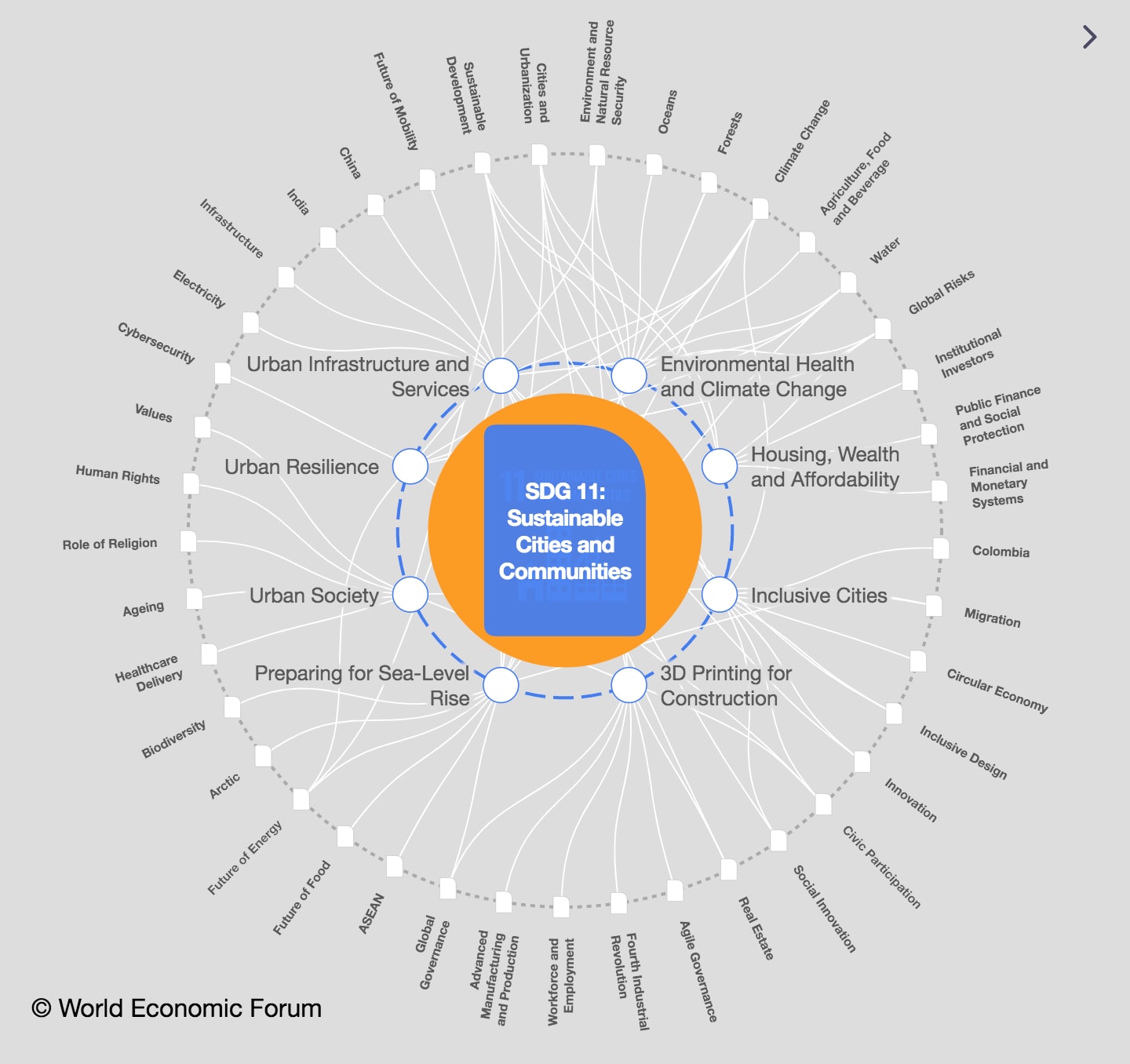5 things you need to know about cities on World Cities Day 2020

Cities remain vitally important parts of the global human ecosystem. Image: Unsplash/Rachel Martin

Get involved with our crowdsourced digital platform to deliver impact at scale
Stay up to date:
SDG 11: Sustainable Cities and Communities
- More than half of the people in the world live in a city.
- Cities occupy less space than many people realize.
- They are responsible for a significant amount of greenhouse gas emissions.
Despite the pressure and disruption inflicted on urban centres and their citizens by the COVID-19 pandemic, cities remain vitally important parts of the global human ecosystem.
To help mark World Cities Day 2020 on 31 October, which this year takes the theme of Valuing Our Communities and Cities, here are five facts about city life and why cities are so important to us all.
1. Until 2007, more people lived in rural areas than in cities. Now, around 55% of the world’s population lives in cities, according to the UN. By 2050, that’s likely to have gone up to 68%. Most of that increase will occur in African and Asian countries.
2. By 2035, the world’s most populous city will be Jakarta, at which point it will push the current holder of that title, Tokyo, into second place. They will be followed by Chongqing, Dhaka and Shanghai, respectively. Together, the top five biggest cities will be home to around 165 million people.
3. Despite all that growth, urban areas actually only cover around 1% of the surface of the Earth. The term ‘urban areas’ can be applied to include a multitude of built-up areas. But there is no internationally agreed definition of what an urban area is.
4. Cities could be responsible for as much as 70% of global CO2 emissions. Most of that comes from urban transport and the energy consumption of buildings.
If a city is spread out and suburban, with limited public transport, its inhabitants will be more dependent on privately-owned vehicles. That situation can become worse if facilities like shops and medical care are not within easy walking distance, or there are insufficient transit options for getting to work. The good news is that addressing this problem can be done, at least in part, by better urban planning.
5. Around the world, there are 136 port cities that each have a population of more than one million. More than a quarter of them are in locations that are at a higher risk from coastal flooding.
In the next 50 years, the number of people living in cities with a high risk of coastal flooding could reach 150 million – a threefold increase on the approximately 40 million today.
On the World Cities Day website, the UN writes that although cities can be great places to live and work, they can also foster societal challenges. “Urbanization provides the potential for new forms of social inclusion, including greater equality, access to services and new opportunities, and engagement and mobilization that reflects the diversity of cities, countries and the globe.
“Yet too often this is not the shape of urban development. Inequality and exclusion abound, often at rates greater than the national average, at the expense of sustainable development that delivers for all.”
The UN also highlights that in 2020, cities have had to contend with the COVID-19 pandemic, which has put pressure on many local communities that have found themselves “on the frontline of the COVID-19 response”.
Don't miss any update on this topic
Create a free account and access your personalized content collection with our latest publications and analyses.
License and Republishing
World Economic Forum articles may be republished in accordance with the Creative Commons Attribution-NonCommercial-NoDerivatives 4.0 International Public License, and in accordance with our Terms of Use.
The views expressed in this article are those of the author alone and not the World Economic Forum.
Related topics:
The Agenda Weekly
A weekly update of the most important issues driving the global agenda
You can unsubscribe at any time using the link in our emails. For more details, review our privacy policy.
More on Urban TransformationSee all
Victoria Masterson
April 17, 2024
Fatemeh Aminpour, Ilan Katz and Jennifer Skattebol
April 15, 2024
Victoria Masterson
April 12, 2024
Victoria Masterson
April 11, 2024
Arama Kukutai
April 10, 2024








